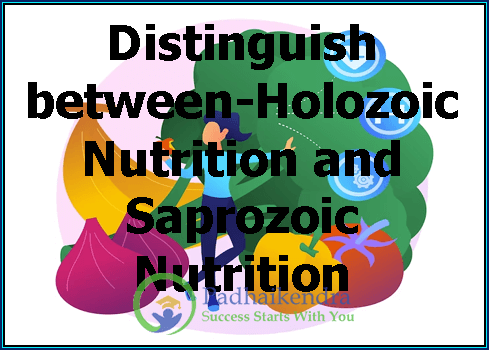Holozoic nutrition and saprozoic nutrition are two different modes of nutrition in which organisms obtain their food.
- Holozoic nutrition: This is the mode of nutrition in which organisms ingest solid or liquid food particles and then digest them internally. This type of nutrition is characteristic of animals, including humans, who take in food through the mouth and then digest it through the digestive system. The food is broken down into simpler molecules, which are absorbed and utilized by the organism for energy, growth, and repair.
- Saprozoic nutrition: This is the mode of nutrition in which organisms feed on dead or decaying organic matter, such as dead plant or animal material. This type of nutrition is characteristic of fungi and some bacteria, which secrete digestive enzymes onto the dead organic matter, breaking it down into simpler molecules that can be absorbed and utilized by the organism for energy, growth, and reproduction.
In summary, holozoic nutrition is the mode of nutrition in which organisms ingest solid or liquid food particles and digest them internally, while saprozoic nutrition is the mode of nutrition in which organisms feed on dead or decaying organic matter and digest it externally using enzymes. Holozoic nutrition is characteristic of animals, while saprozoic nutrition is characteristic of fungi and some bacteria.





